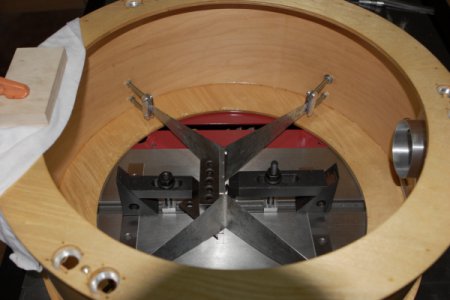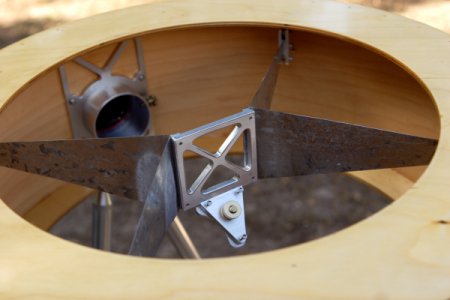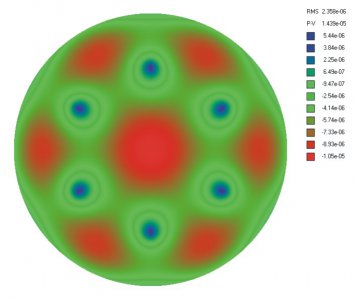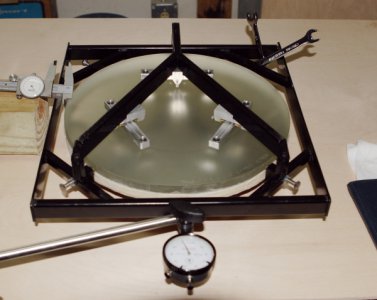I thought you guys would enjoy the means by which I made the vanes for the upper assembly.
{After 4 unsuccessful attempts over 1.5days, I gave up on making the triangles and trying to adapt them to the upper assembly at hand.}
So, after thinking about is over night I came up with a plan whereby I would hold the secondary frame in place, and also hole the upper assembly in place so that I could cut, cut, fold, mark and drill the holes in the vanes with the rest of the structure not moving.
The secondary frame is raised off of the table saw bed by a 1/4" thick 45 degree triangle. The frame is clamped to a 1-2-3 block with a setup bolt and nut. The frame is then held down with setup clamps and the tension adjusted so the frame was perfectly square to the bed of the table saw.
The pickup point beams were then placed at mid adjustment and bolted to the upper assembly so that they were stiff for the duration. One side of the beam was removed for easier access.
Then one by one each vane was constructed, cut out of raw stock (roofing flashing material--lifetime supply for $8.00). After being cut two 0.111 holes (4-40 thread diameter) at the proper separation. after the holes are drilled, the vane is screwed and clamped to the bending jig and bent to 45 degrees. Back at the assembly table the vane is screwed into the secondary frame, a corner is colored with dikem and marked with a scribe from teh other side. this hold is then located and drilled 0.111. brought back and tested. Repeat 3 more times.

Then, finally, after all for vanes are fitted and brought into tension, the entire setup jig is disassembled and the upper assembly stuffed with fire proof blanket then the vanes are silver soldered in situ. This produces vanes that are absolutely square to the optical axis.
Here is an image of the upper assembly assembled onto the scope with the secondary (less optics).

I am very happy with this spider assembly. It is stiff enough one can grab the upper assembly from the secondary frame and hoist the upper assembly around with little chance of even harming the collimation! It is stiff. And to the extent I can measure it, it is perfectly square.
Other than the somewhat cramped quarters of the assembly jig, this means worked quite well.







